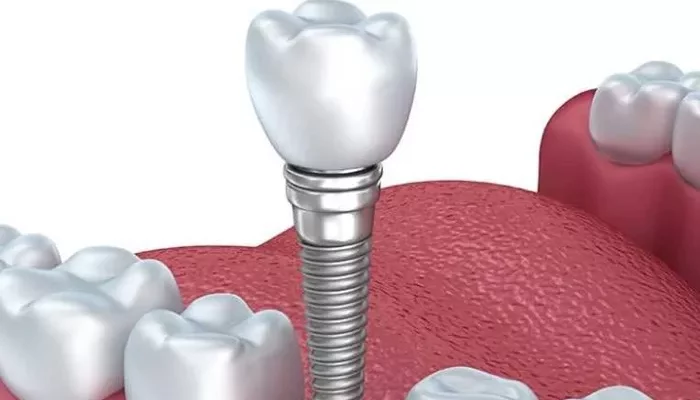Dental implants are a highly effective method for restoring missing teeth. They offer a permanent solution that mimics the appearance, function, and feel of natural teeth. Among the components of dental implants, the abutment plays a crucial role. This article aims to provide a detailed introduction to the abutment in dental implants, explaining its function, types, and the process of its installation in a logical and easy-to-understand manner.
Understanding Dental Implants
Dental implants are artificial devices used to replace missing teeth. They are composed of three main parts: the implant post, the abutment, and the crown. Each component serves a specific function to ensure the stability, durability, and natural appearance of the restored tooth.
Implant Post: Also known as the fixture or anchor, the implant post is inserted into the jawbone. It acts as an artificial tooth root, providing a stable foundation for the restoration. Made from biocompatible materials such as titanium, the post integrates with the bone through a process called osseointegration.
Crown: The visible part of the implant that resembles a natural tooth. It is custom-made to match the color, shape, and size of the adjacent teeth, ensuring a seamless restoration.
Abutment: The abutment serves as the interface between the implant post and the crown. It connects the two components, ensuring that the crown is securely attached and functions properly.
What is an Abutment?
An abutment is a dental prosthesis that connects the implant post to the crown. It acts as a bridge, transferring the forces of chewing from the crown to the implant post and ultimately to the jawbone. The abutment ensures that the crown is stable, preventing it from moving or becoming loose.
Types of Abutments
There are several types of abutments, each designed for specific applications and patient needs:
Prefabricated Abutments: These are standardized abutments that come in various sizes and shapes. They are pre-manufactured and can be easily adjusted to fit the patient’s implant post and crown. Prefabricated abutments are cost-effective and can be used in a variety of situations.
Custom Abutments: Custom abutments are made specifically for the patient. They are designed to fit perfectly with the patient’s implant post and crown, ensuring optimal fit and function. Custom abutments are often used in cases where a prefabricated abutment would not provide a suitable fit or when the patient has unique dental needs.
Stock Abutments: These abutments are similar to prefabricated abutments but come in a limited range of sizes and shapes. They are less customizable than custom abutments but more flexible than prefabricated abutments. Stock abutments are often used in cases where a custom abutment is not necessary but a more tailored fit than a prefabricated abutment is desired.
Angulated Abutments: These abutments are designed to correct the angle between the implant post and the crown. They are used when the implant post is not aligned correctly with the adjacent teeth or when the patient has a unique bite pattern. Angulated abutments help to ensure that the crown is positioned correctly, improving the aesthetics and function of the restoration.
The Role of the Abutment
The abutment plays a vital role in the success of dental implant restorations. It ensures that the crown is securely attached to the implant post, preventing it from becoming loose or falling out. The abutment also helps to distribute the forces of chewing evenly across the implant post and jawbone, reducing the risk of damage or failure.
In addition to its structural role, the abutment also plays a critical aesthetic role. It helps to create a seamless transition between the crown and the adjacent teeth, ensuring that the restoration looks natural and blends in with the surrounding dentition.
The Installation Process
The installation of the abutment is a crucial step in the dental implant process. It typically occurs after the implant post has integrated with the jawbone, a process that can take several months.
Preparation: Before installing the abutment, the dentist will prepare the implant post by cleaning it and removing any debris or plaque. The surrounding gum tissue may also be trimmed to ensure a proper fit for the abutment.
Abutment Selection: The dentist will select the appropriate abutment based on the patient’s specific needs and the type of restoration being performed. Prefabricated, custom, or stock abutments may be used, depending on the situation.
Attachment: The abutment is then attached to the implant post using a special screw or adhesive. The dentist will ensure that the abutment is securely in place and that it aligns correctly with the adjacent teeth.
Healing: Once the abutment is in place, the surrounding gum tissue will heal around it. This can take several weeks. During this time, the patient may need to follow specific care instructions, such as avoiding chewing on the affected side.
Crown Placement: Once the gum tissue has healed, the dentist will take an impression of the abutment and surrounding teeth. This impression will be used to create a custom crown that fits perfectly over the abutment. The crown will be attached to the abutment using a strong adhesive or cement, completing the restoration.
Conclusion
In conclusion, the abutment is a crucial component of dental implants. It serves as the interface between the implant post and the crown, ensuring that the restoration is stable, durable, and aesthetically pleasing. By understanding the different types of abutments and the installation process, patients can make informed decisions about their dental implant restorations. With proper care and maintenance, dental implants can provide a long-lasting and effective solution for missing teeth.
Related topics:

